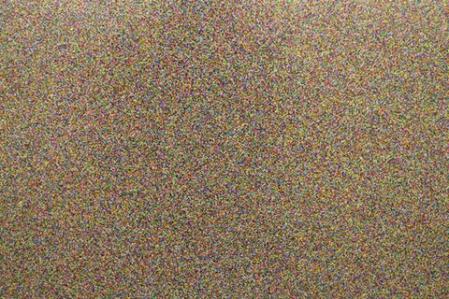dis order – A Short History of Disorder
In recent decades geometric patterns such as stripes or grids have lost their significance as symbols in the present. Postmodernity already questioned progress, the model of linearity in history. In his theory of Liquid Modernity sociologist Zygmunt Baumann considers grids and straight lines as unsuitable images of the present. Instead he characterizes our present-day social ties as liquid, as permanently in motion.
The recurring break
The photography of New Objectivity was marked by a strict serial principle. The photographers of the group Fotoform, founded in the 1950s, returned to the abstract perspective of the pre-War years, but sought a subjective expression. Ultimately Otto Steinert established “subjective photography” from this group. His shots and those of Peter Keetman or Toni Schneiders not only contain minimalist patterns, stripes, grids, etc., but a particular interest in the interruptions in the repetitions is evident time and again.
Chance
Producing a random structure is a difficult challenge. The human eye tries to find patterns everywhere, even where objectively there are none. The fascination for the non-linear, irregular, chaotic, and natural goes back to the 1950s. Albert Einstein’s Theory of Relativity and Werner Heisenberg’s uncertainty principle provoked the development of a new, non-linear mathematics. When Mark Tobey strived in his all-over paintings to eliminate all rational structure from his work, chance was at the centre of artistic debate in New York.
Structures
The photographers of the Fotoform group went one step further in their interest in abstraction and structures. They used enlarged and microscopic shots to create new abstract images that no longer had any form of figuration. Here too they referenced the pre-War years, when August Kreyenkamp for instance enlarged his macrophotographs to painting format. As such they entered formal planes that mathematicians were starting to take an interest in at the same time: crystals, fractals, self-similar structures. It is not identical elements that recur in these structures, but “similar” ones. They are variations of a rule. Moreover, the form of repetition is irregular.
Swarms and Noise
Since the 1990s logarithms have enabled the visualization of chaotic phenomena in computer graphics, making concepts such as swarms or networks interesting for the social sciences. It became possible to calculate the heterogeneous behaviour of groups of people as scenarios. Thus the element of the informal came back into play. In groups, self-similarity replaces identical reproduction (as in the military, for example) and the swarm the rigid grid. Yet the last stage of disorder is noise, as in the piece Diaspern by Katharina Hinsberg. Here the artist has cut out the swarm of pencil strokes. What remains is a diffuse interplay of shadows.
Back to dis order …
Share on




